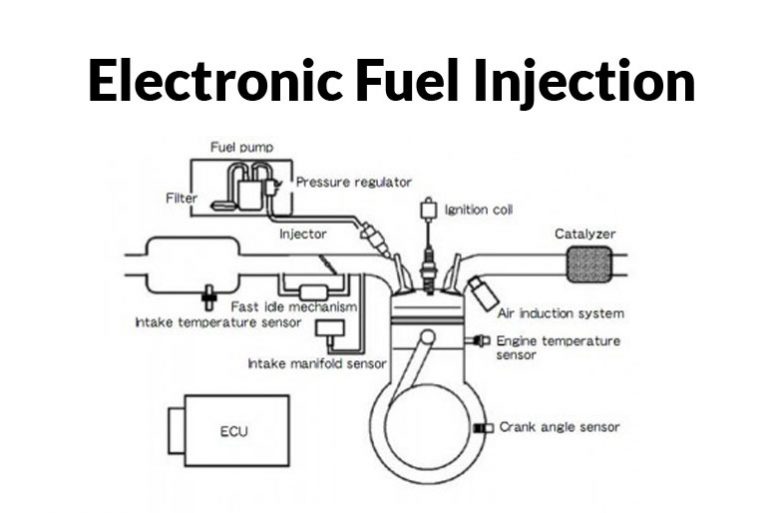Kubota Insurance
Posted By: Mike Kunert
Post Date: 01/02/2020
Winter brings about frigid temperatures and lots of snow. Maybe it’s time that you pull out your snowmobiles and hit the trails and put your ATV away for the winter. In this case, there are some things you need to know about how to properly winterize your ATV so it’s ready for the spring!l
Do I Need To Winterize My ATV?Winter brings harsh conditions that can put even the most rugged ATVs to the test. The longevity of the battery, fuel, antifreeze, air filter, engine oil, CVT clutch, and more are dependent on effective winterization. By winterizing your ATV, you could save thousands of dollars and countless hours of hassle.
Below are helpful hints on how to help your ATV survive the winter.
StorageWhen not using your ATV in the winter, it’s important to store it under something that will protect it from the elements. Your garage or a trailer is a great place, but if you don’t have either, it would be smart to invest in a good vehicle cover with ventilation (depending on where you live geographically). However, before your park or cover your ATV for the duration of winter, it’s a good idea to spray, wash, and polish it. This helps to preserve the surfaces and keep it from oxidizing.
FuelTaking care of the fuel in your ATV is another important factor. If you leave the fuel sitting around for awhile it will either varnish or go through “phase separation” where the ethanol actually separates from the gas and moves to the bottom of the tank. However, there is a way to prevent this from occurring, and it’s as simple as adding a fuel stabilizer to treat the gas and starting your ATV and letting it rally for about five minutes to ensure proper application.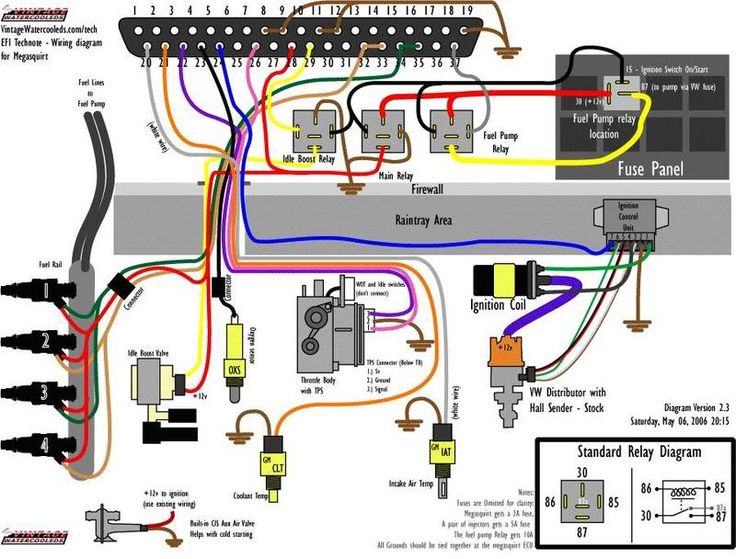
It’s crucial to keep your battery in fantastic working conditions. When deciding how to store your vehicle for the winter, you may want to consider taking the battery out entirely and place it on a trickle charger. This will work to keep in a good state of charge when you go to start up your ATV come spring!
Air FilterWhen leaving your ATV in storage for the winter, you’re in turn exposing it to any critters that may be roaming around your garage. The last thing you’ll want to deal with when you take it back out is a nest that may have formed in the previous months. For both the safety of you and the animals, it may be smart to block off the inlet ports to air box. However, give yourself an indicator as a reminder that you did this so you can effectively unblock it when needed.
TiresBecause you’re leaving your ATV sitting for a long period of time, it’s putting constant heavy pressure onto the tires. If it’s at all possible, it’s advisable to elevate the vehicle so there is no loaded pressure. Not only is this good for preventing flat spots, but it also helps prolong the longevity of your tires, saving you money in the end.
If it’s at all possible, it’s advisable to elevate the vehicle so there is no loaded pressure. Not only is this good for preventing flat spots, but it also helps prolong the longevity of your tires, saving you money in the end.
Owning an ATV is a lot of fun, but with fun comes responsibility. It’s up to you to properly prepare your vehicle for winter, so come spring you can easily take it out and begin riding it again. You’ll thank yourself later if you properly take care of your vehicle today!
Mike Kunert is the general manager of Powersports Company. He is very passionate about the powersports and outdoor equipment industry. He does everything from sales to service at the store. With 23+ years in the powersports/outdoor equipment industry and many OEM factory certifications, he has a lot of knowledge about the industry.
RSS
« Return To The List
Posted By: Mike Kunert
Post Date: 01/02/2020
Winter brings about frigid temperatures and lots of snow. Maybe it’s time that you pull out your snowmobiles and hit the trails and put your ATV away for the winter. In this case, there are some things you need to know about how to properly winterize your ATV so it’s ready for the spring!l
Maybe it’s time that you pull out your snowmobiles and hit the trails and put your ATV away for the winter. In this case, there are some things you need to know about how to properly winterize your ATV so it’s ready for the spring!l
Winter brings harsh conditions that can put even the most rugged ATVs to the test. The longevity of the battery, fuel, antifreeze, air filter, engine oil, CVT clutch, and more are dependent on effective winterization. By winterizing your ATV, you could save thousands of dollars and countless hours of hassle.
How to Winterize an ATVBelow are helpful hints on how to help your ATV survive the winter.
StorageWhen not using your ATV in the winter, it’s important to store it under something that will protect it from the elements. Your garage or a trailer is a great place, but if you don’t have either, it would be smart to invest in a good vehicle cover with ventilation (depending on where you live geographically).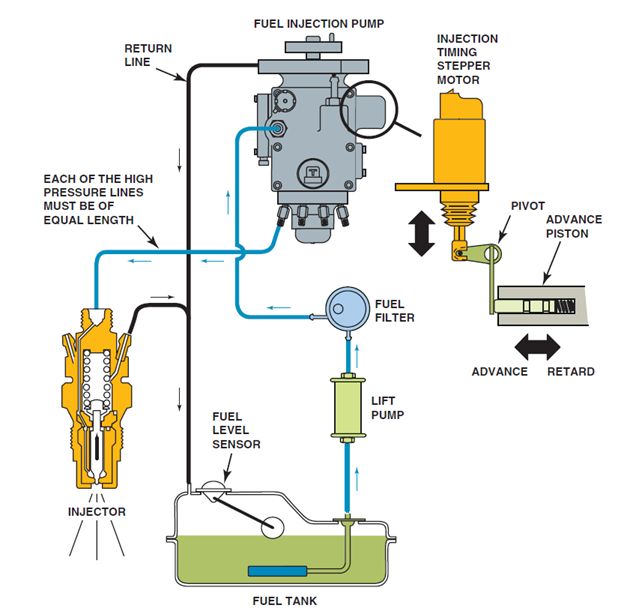 However, before your park or cover your ATV for the duration of winter, it’s a good idea to spray, wash, and polish it. This helps to preserve the surfaces and keep it from oxidizing.
However, before your park or cover your ATV for the duration of winter, it’s a good idea to spray, wash, and polish it. This helps to preserve the surfaces and keep it from oxidizing.
Taking care of the fuel in your ATV is another important factor. If you leave the fuel sitting around for awhile it will either varnish or go through “phase separation” where the ethanol actually separates from the gas and moves to the bottom of the tank. However, there is a way to prevent this from occurring, and it’s as simple as adding a fuel stabilizer to treat the gas and starting your ATV and letting it rally for about five minutes to ensure proper application.
BatteryIt’s crucial to keep your battery in fantastic working conditions. When deciding how to store your vehicle for the winter, you may want to consider taking the battery out entirely and place it on a trickle charger. This will work to keep in a good state of charge when you go to start up your ATV come spring!
Air FilterWhen leaving your ATV in storage for the winter, you’re in turn exposing it to any critters that may be roaming around your garage. The last thing you’ll want to deal with when you take it back out is a nest that may have formed in the previous months. For both the safety of you and the animals, it may be smart to block off the inlet ports to air box. However, give yourself an indicator as a reminder that you did this so you can effectively unblock it when needed.
The last thing you’ll want to deal with when you take it back out is a nest that may have formed in the previous months. For both the safety of you and the animals, it may be smart to block off the inlet ports to air box. However, give yourself an indicator as a reminder that you did this so you can effectively unblock it when needed.
Because you’re leaving your ATV sitting for a long period of time, it’s putting constant heavy pressure onto the tires. If it’s at all possible, it’s advisable to elevate the vehicle so there is no loaded pressure. Not only is this good for preventing flat spots, but it also helps prolong the longevity of your tires, saving you money in the end.
Owning an ATV is a lot of fun, but with fun comes responsibility. It’s up to you to properly prepare your vehicle for winter, so come spring you can easily take it out and begin riding it again. You’ll thank yourself later if you properly take care of your vehicle today!
Mike Kunert is the general manager of Powersports Company. He is very passionate about the powersports and outdoor equipment industry. He does everything from sales to service at the store. With 23+ years in the powersports/outdoor equipment industry and many OEM factory certifications, he has a lot of knowledge about the industry.
He is very passionate about the powersports and outdoor equipment industry. He does everything from sales to service at the store. With 23+ years in the powersports/outdoor equipment industry and many OEM factory certifications, he has a lot of knowledge about the industry.
RSS
« Return To The List
Table of Contents
Many people that live in areas that get too cold to ride in the winter should look into winterizing their ATVs. Winterizing is just getting your quad ready to sit for several months at a time. It always sucks when winter rolls around because you don’t want to have to put your ATV into storage but if you know how to properly do it then you will save a lot of time, money, and heartache if something decides to tear up because you didn’t winterize properly, or even at all.
Some people live in climates that are warm enough, or just not cold enough to ride all year long. I really envy people in these climates in the winter months because I like to ride and want to do it all year long. In climates that are warm enough you don’t even need to winterize your ATV because it will be in constant use. When I lived in Utah, we used to get snow every year, and plenty of it, so I made sure that I at least did the bare minimum winterizing so it would be ready for the next year. Most times I would do the full process to make sure my quad was ready as soon as the weather warmed up a bit.
The absolute bare minimum maintenance you must do to winterize your ATV is
Fuel stabilizer keeps the fuel from breaking down inside the gas tank and keeps water from forming.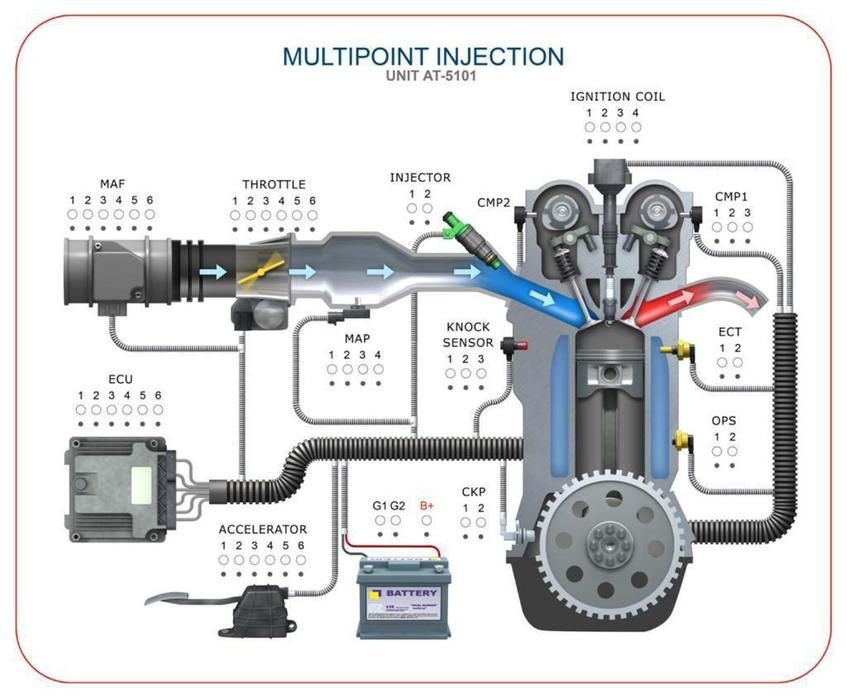
If you remove the battery and let it sit all winter, it may still drain. Purchase a “drip” or smart charger like this one from Amazon and it will charge up the battery only when it depletes some charge.
I have used Battery Tender brand chargers since I started riding my Yamaha R6 back in 2006 and use them for all my vehicles. They work great and have small footprints and will keep you from spending $50-$100 dollars each winter because your battery went dead from it sitting on your bench or in your garage.
That is it for the “under 10 minute” part of winterizing your ATV. If you are anything like me and like to keep up on the maintenance of your rides then you will want to check out the detailed version and winterize to ensure the long life of your ATV.
There are 12 key steps to fully winterizing your ATV and there are 12 distinct reasons why you want to ensure they are performed. All 12 reasons will help ensure the longevity of your ATV and protect your investment for years and years to come. It takes discipline to actually follow through and maintain vehicles like these to make sure they receive the proper care and attention they need.
All 12 reasons will help ensure the longevity of your ATV and protect your investment for years and years to come. It takes discipline to actually follow through and maintain vehicles like these to make sure they receive the proper care and attention they need.
Most of the time us ATV owners only know how to make a mess but it is very important that we also know how to clean up our ATV. The first thing you want to make sure you do is to cover your intake box and exhaust area with plastic bags so no water gets in them. You can get a muffler plug and an air box seal that will seal those areas but I find a plastic bag works just fine as long as you tape it on.
Washing down starts with a good pre soak. Take your hose and spray down the entire ATV making sure to get all the nooks and crannies. Let it sit there for about 10 minutes and start breaking down the mud and gunk. Now spray it off with as much pressure as you can get. If you are going to use a pressure washer do not use it on the seat, plastics, bearings, or electronic parts.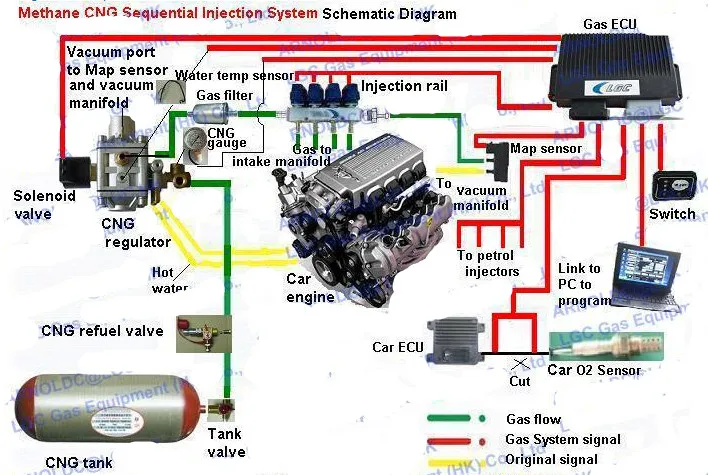 Make sure you use a detergent and was down everything with a sponge or plastic bristle brush. Once you have hit all the areas and you can no longer see any gunk, it is time to rinse the WHOLE ATV off.
Make sure you use a detergent and was down everything with a sponge or plastic bristle brush. Once you have hit all the areas and you can no longer see any gunk, it is time to rinse the WHOLE ATV off.
Grab a towel and dry the entire quad off after you finished rinsing it. We don’t want any rust to start forming because we missed some spots after a wash. It is not a bad idea to grab some spray on polish and coat the plastics, seat, and other surfaces to keep them from oxidizing over the long winter months.
Since we are riding off road our quads will get tons of dirt, mud, and debri in to all the nooks and crannies and can hold water in causing rust to start forming. Dirt and grime will also cause your moving parts to break down more quickly. Cleaning should be done often, not just before winter.
Now that your ATV is shiny and sparkly clean, we have to make sure we protect all the components that could rust or corrode.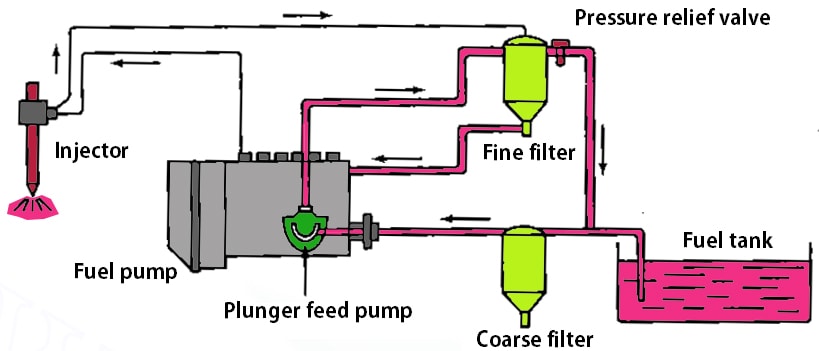 Things like the chain, drive shaft, U-joints, CV joints, suspension, throttle cable, brake cable, and clutch cable. You will want all these areas lubed up and in great working condition because they will not only affect your ride, but if not maintained can cause your ride to come to a stop early one day if one of these components wears out or breaks due to improper maintenance.
Things like the chain, drive shaft, U-joints, CV joints, suspension, throttle cable, brake cable, and clutch cable. You will want all these areas lubed up and in great working condition because they will not only affect your ride, but if not maintained can cause your ride to come to a stop early one day if one of these components wears out or breaks due to improper maintenance.
There are specialized lubes for some of these components like the chain but most can be lubed using regular waterproof grease. While lubing up all these parts, make sure you check rubber boots and components throughout the ATV for wear, cracks, or dry rot. These rubber components help to protect your critical joints and bearings ao it is crucial to make sure they are not going to fail and downtime during the winter months is the perfect time to replace them.
Dirt and gunk can get into the moving parts of your ATV and cause wear over time. Things like sand and gravel can get inside your bearings and damage them and lubrication helps reduce that.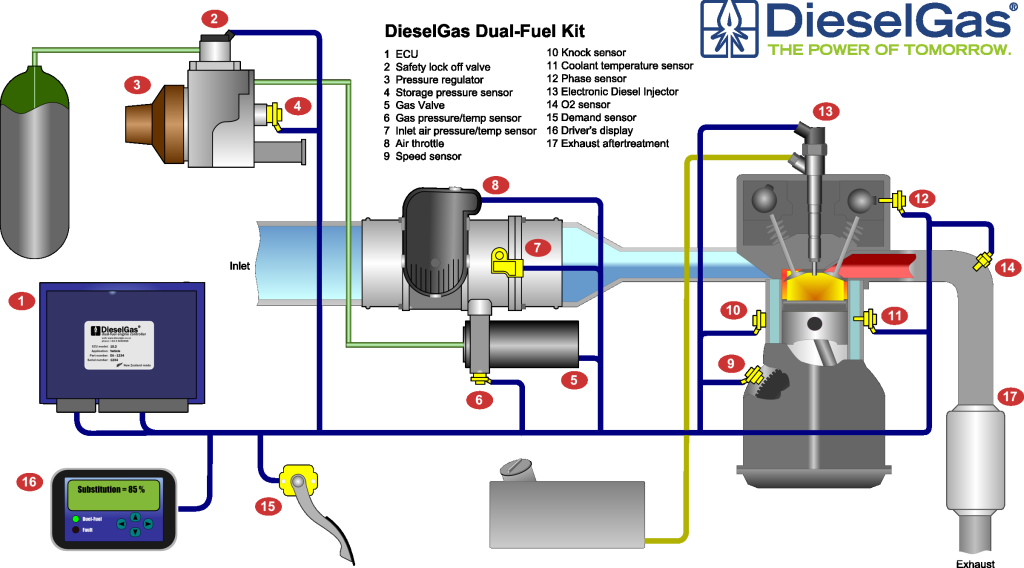 Lubrication also reduces the friction of those moving parts to keep them from their wear when they rub or move against each other during normal operation.
Lubrication also reduces the friction of those moving parts to keep them from their wear when they rub or move against each other during normal operation.
If you have a liquid cooled engine, then it is a good idea to service your ATVs coolant system before you store it for the winter. If you’ve kept up on standard maintenance, you are probably okay to just store your ATV without replacing the coolant. The recommendation is about every two years, but you should check your owner’s manual to make sure that is the recommendation for your ATV. Even if you have kept up on maintenance, it’s not a bad idea to flush the cooling system and replace it with new coolant if you plan on storing your ATV for several months over the winter.
As your coolant is used in an ATV it will deteriorate in performance over time. This can be caused by a build up of aluminium corrosion or when a change in the fluid to coolant ratio occurs when you top off your coolant system. Most coolants contain special ingredients to help keep the solution more alkaline and will lose effectiveness over time.
Most coolants contain special ingredients to help keep the solution more alkaline and will lose effectiveness over time.
Changing the oil is one of the most important and most often performed routine maintenance actions. ATV engines are run hard most of the time and the oil makes sure the engines internal components are clean, protected, lubricated to prevent excessive wear.
Once the engine is run and the oil goes through the internal compartments over and over, removing the dirt, the oil becomes dirty itself causing it to not be effective. Old oil does not do its job to protect your engine components and will cause wear at a faster rate and cost lots of money in the long run. Check out this article I wrote about changing the oil in a 4 stroke engine to learn how to properly maintain your oil system in more detail.
Service your air filter by cleaning it out or replace it with a new one before you store your ATV for the winter. It is very easy to clean an ATV filter. If an air filter is not cleaned properly and oiled up well enough, it can cause debris such as sand, dirt, and dust to get into your engine through the intake. With a properly maintained filter your engine will last many years longer than if maintenance is neglected. When you pull your ATV out of storage at the end of winter and are ready for a ride, it will be ready to go.
It is very easy to clean an ATV filter. If an air filter is not cleaned properly and oiled up well enough, it can cause debris such as sand, dirt, and dust to get into your engine through the intake. With a properly maintained filter your engine will last many years longer than if maintenance is neglected. When you pull your ATV out of storage at the end of winter and are ready for a ride, it will be ready to go.
If you are going to store your ATV for an extended period of time then you probably need to think about fogging your engine. You will have to remove the air filter and start up the engine in order to do this step. You need to spray the fogging oil directly into the intake while the engine is running. It won’t take long for the fogging oil to work its way through the engine and get combusted. (You can see it come out of the exhaust.) Fogging the ATVs engine is a process applies a protective coating to the internal components that are critical to proper engine performance such as the cylinder, pistons, and valves. Performing this step is similar to replacing the oil and lubing up the quad as it will prevent rust and corrosion.
Performing this step is similar to replacing the oil and lubing up the quad as it will prevent rust and corrosion.
If you don’t want to fog your engine there is an alternative method that can be done. You will have to take a ratchet and unscrew the spark plug. Pour a teaspoon of oil and dump it inside the spark plug housing and then reinstall the spark plug making sure to torque it to the proper setting. Make sure you do not replace the spark plug cap because you are not going to start the engine. You only want to crank the engine a few times but not have it turn over and start up. Doing this a few times will coat all the internal components with oil to prevent rust and corrosion.
Ethanol gas is used at all gas stations and you will most likely be using that type of gas to fill up your ride and ethanol likes to attract water. We definitely do not want water getting into our fuel system because that will cause a ton of problems whether you have a fuel injected system or a carbureted system. After gas has been sitting it starts to varnish and separate and the ethanol will settle down to the bottom of your fuel tank and if there is any condensation inside the tank, the ethanol will bring that water along with it. Treating the gas with a fuel stabilizer can easily prevent this problem and is a simple and cheap way to make sure your fuel system is good to go.
After gas has been sitting it starts to varnish and separate and the ethanol will settle down to the bottom of your fuel tank and if there is any condensation inside the tank, the ethanol will bring that water along with it. Treating the gas with a fuel stabilizer can easily prevent this problem and is a simple and cheap way to make sure your fuel system is good to go.
Once you have treated your fuel system you will need to let it run through your machine to make sure all the fuel has been treated. Fuel can remain inside the lines of the ATV even after the engine has stopped so you want to circulate the fuel to get the stabilizer into every fuel component. All you have to do is start up your quad and ride it around for a good 5 or 10 minutes to circulate the fuel.
When putting your ATV into storage, it’s always good to remove the battery from the machine and place it on a drip charger or similar device to keep it charged. You should probably go ahead and install quick-disconnect leads. They will make it easy to pull the power and ground cables off the battery without having to unscrew them from the terminals, which can be a pain depending on your setup and you can also just plug these connections into your smart charger. You can also buy battery clamp leads that just hook right up to your battery.
They will make it easy to pull the power and ground cables off the battery without having to unscrew them from the terminals, which can be a pain depending on your setup and you can also just plug these connections into your smart charger. You can also buy battery clamp leads that just hook right up to your battery.
If you remove the battery and let it sit all winter, it may still drain. Purchase a “drip” or smart charger like this one from Amazon and it will charge up the battery only when it depletes some charge.
You are going to want to make sure your tires are in proper order for the next riding season. Inspect each tire and make sure there is nothing that has punctured the tire and is still inserted like a nail or a screw. These can become embedded in your tire but not cause them to go flat but can cause a problem if you ride on them not knowing. Inspect the tread on your tires and make sure they are not too worn because worn tires mean your ATV will not grip the dirt and your handling will decrease and possibly cause you to lose control.
Putting your ATV up on stands is a great idea if you can afford to buy a stand. If you can’t then you should find some way to elevate both tires off the ground. This will keep them from getting flat spots and needing to be replaced before the next riding season.
If your ATV comes with a carburetor instead of fuel injection, then it is important to drain the carburetor, especially if your fuel stabilizer isn’t alcohol-free. With the ATV running, close the fuel petcock valve and let the engine run out of fuel. Now let the engine cool down and locate the drain screw for the float bowl. Unscrew the drain screw and let the remaining fuel from the carburetor drain out into a container.
Storing an ATV inside or outside can pose a potential for small animals and other critters to make their new homes in your shiny and clean ATV you are trying to store for the winter. Often the animals will crawl up inside the undercarriage or into the wheel wells and make their nests or homes from your ride.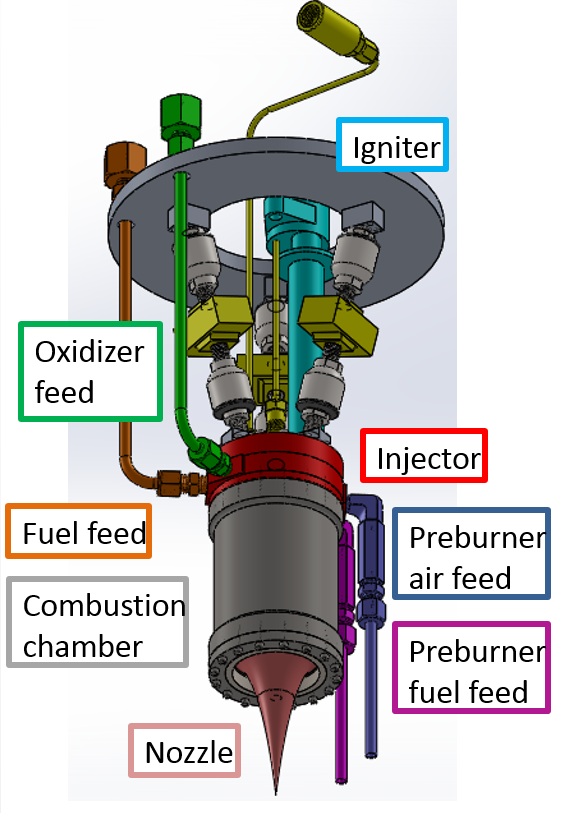 This can cause several issues that you do not want to deal with. If they are still there or have had babies in the spring when you go to start up for a ride it can cause them to get caught in the moving parts and make a big animal mess that you will have to clean up. Along with this, animals may chew holes in brake lines or electrical components and plastics in order to make sure they are comfortable and this can lead to a much more expensive problem than a simple clean up.
This can cause several issues that you do not want to deal with. If they are still there or have had babies in the spring when you go to start up for a ride it can cause them to get caught in the moving parts and make a big animal mess that you will have to clean up. Along with this, animals may chew holes in brake lines or electrical components and plastics in order to make sure they are comfortable and this can lead to a much more expensive problem than a simple clean up.
The simplest way to keep critters out is just to cover up any openings that they might crawl into with some duct tape and make sure any other areas can be visible when it is time to bring the quad back out to play. You will have to do a post storage inspection to ensure there are no critters hanging out.
You might want to block off the inlet ports to the air box to prevent any animals from building nests inside the intake system. If you do decide to block off the inlet ports make sure to leave a flag or some sort of indicator reminding you to unblock them in the spring.
I realize that not everyone has a garage or even a building to store their ATV in but there are still steps to take that can help protect it from the harsh elements and preserve its components. If you have a garage or a building or even a trailer, this is preferential to storing them outside in the elements. I recommend you cover your ATV with a proper ATV cover or tarp that will cover it to the ground no matter where you decide to store it.
Depending on where you are located and how harsh or mild the winters are in your area, you might want to look into getting a cover with ventilation to make sure you are not going to trap any moisture inside negating all the work you did winterizing the past hour and a half or so. The cover protects the ATV from snow, rain and sun which will cause wear over time.
This in depth guide on winterizing your ATV is not for all people and you can get away with the 10 minute method but if you are like me and like to keep your ATV in tip top shape then you should really invest the time to winterize your machine the right way.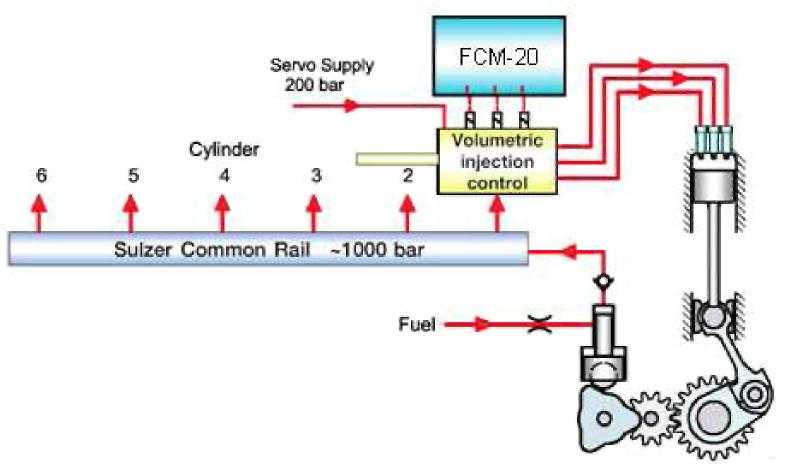
Contents:
ATV trips are a pleasure not only in the warm season, but also in winter. In addition, in winter there is always work for the ATV, for example, to remove snow from the driveway. However, the operation of an ATV in winter has a number of features that must be considered in order to avoid problems and breakdowns.
Consider not only the process of driving an ATV, but also the preparation of an ATV for winter operation.
To operate the ATV in winter, change the engine oil to a lower viscosity grade.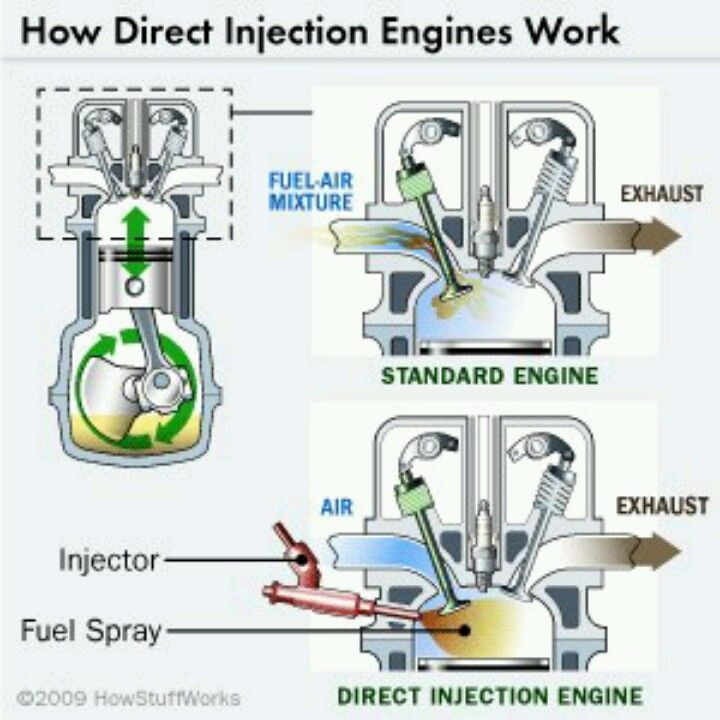 If 10W-40 is suitable in the warm season, then it would be advisable to use 5W-40 for winter. It is also worth considering that this should be a synthetic oil for ATVs or motorcycles, not for cars, as it contains special additives for wet clutch operation.
If 10W-40 is suitable in the warm season, then it would be advisable to use 5W-40 for winter. It is also worth considering that this should be a synthetic oil for ATVs or motorcycles, not for cars, as it contains special additives for wet clutch operation.
Recommended oil for CFMOTO ATVs is CFMOTO G-Motion , which is adapted to the peculiarities of the operation of equipment in Russia, has passed multiple tests and has an increased margin of protective properties, ensuring uninterrupted operation of the engine in all operating modes, including extreme ones.
It happens that after summer operation there is water in the cooling system, which can freeze at low temperatures. Before the onset of cold weather, we recommend pouring only high-quality antifreeze or antifreeze into the ATV cooling system.
Tested and recommended for CFMOTO ATVs is CFMOTO G-Motion Antifreeze .
It is recommended to remove the additional protection from the levers during the winter, as it can trap and accumulate snow. In view of the proximity to the heating elements of the transmission, this snow will subsequently turn into ice growths that can damage the anthers of the CV joints.
You should also think about removing the underbody protection for the winter, because if you decide to overcome a water barrier on an ATV in winter, then there is a risk of carrying frozen snow and ice with you until spring. However, without bottom protection, you should be more careful in choosing routes.
In winter, the battery can be a hassle. The normal battery charge is 12.5V and this indicator must be monitored and the battery recharged in a timely manner.
If your ATV is stored outdoors, the best solution is to remove and bring the battery into a house or other warm area.
Always warm up the engine before winter driving. On average, 5 minutes will be enough. This is necessary so that the oil is evenly distributed throughout the engine.
No matter how warm your gloves are, installing heated grips and heated triggers will help keep you comfortable when riding an ATV in the winter. Heatings have two heating modes (strong and weak), providing a comfortable ride on an ATV both in the autumn-spring period and in cold winter.
If your ATV has fuel injection, then there will be no problems in winter. Owners of carburetor models will have to attend to actions to enrich the fuel mixture and remember the principles of working with a starting enricher (called an air damper in the manuals). It is necessary to start a cold engine with the enricher open, when it is already started - you should move the lever to the middle position to warm up the engine. As soon as the engine warms up, the lever can be returned to the working position and the ride can begin.
As soon as the engine warms up, the lever can be returned to the working position and the ride can begin.
Any winter ATV trip can be overshadowed by out-of-season gear. Be sure to wear special winter equipment , because even if your ATV is completely ready for winter rides, you should be ready for them too: use thermal underwear, a heated helmet, special winter jackets, pants, gloves and boots.
Otherwise ATV winter operation is not much different from other seasons.
Therefore, you should not think about whether it is possible to ride an ATV in winter. Of course it is possible and even necessary! It is winter operation that will allow you to gain new experience, open up new management opportunities and test your equipment in new and sometimes more interesting conditions.
What to do with a quad bike with the onset of cold weather? Owners have two options. First, you can continue to use it. Secondly, if you do not plan to ride, you should prepare the equipment for long-term storage. This process, called “preservation,” will help keep the vehicle protected from corrosion and damage. In the spring, the ATV will be almost immediately ready for operation. The experts of the Sport-Extreme motorcycle online store will tell you about what actions it is desirable to take in the article.
First, you can continue to use it. Secondly, if you do not plan to ride, you should prepare the equipment for long-term storage. This process, called “preservation,” will help keep the vehicle protected from corrosion and damage. In the spring, the ATV will be almost immediately ready for operation. The experts of the Sport-Extreme motorcycle online store will tell you about what actions it is desirable to take in the article.
Although ATVs are considered primarily summer vehicles, after some “adaptation”, the equipment can also be used on snow for recreational trips (hunting, fishing) or technical work (for example, snow removal). Not always and not all owners have such opportunities and desire. And now let's talk about the main recommended list of work to prepare the quadric for "hibernation", which will allow it to be re-opened in the spring as quickly as possible.
Flush your Iron Horse thoroughly. To do this, you can use a special foam, which then needs to be thoroughly washed off. After that, let the motorcycle dry well and apply lubricant to all necessary parts and assemblies that are susceptible to rust.
To do this, you can use a special foam, which then needs to be thoroughly washed off. After that, let the motorcycle dry well and apply lubricant to all necessary parts and assemblies that are susceptible to rust.
Plastic parts should be treated with a protective agent. We lubricate the exhaust pipe with an anti-corrosion compound (for example, WD-40) and plug its hole with a special plug or just a rag. This will prevent rusting and ingress of dust, insects and rodents. With the same tool, it would be nice to go over all unpainted and polished metal areas, as well as chips and scratches.
During lubrication, we carefully inspect the workpieces to see if individual elements, such as nuts, screws and other parts of the joints, are securely fastened.
It makes no sense to leave gasoline for the winter, it degrades. If your quad has a plastic tank, drain all fuel from the tank, carburetor, and hoses. To do this, run the engine at idle.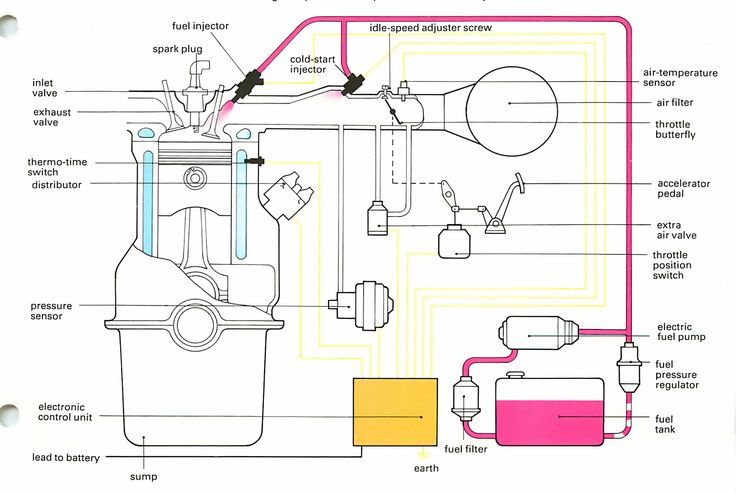
On the contrary, it is better not to leave a metal tank empty: corrosion can occur from the accumulation of condensate inside. Therefore, it is better to fill the tank with 1-2 liters and add a fuel stabilizer. After that, start the engine and let it idle so that the fuel and stabilizer fill the entire system.
If the ATV has a two-stroke engine, it is best to replace the spark plugs with new ones, no matter how long ago you last did it. On a four-stroke engine, simply checking their condition is enough.
Some ATV owners prefer to postpone this event until spring. But it's not right. Old oil, coming into contact with products of the fuel system, can have the same aggressive, corrosive effect on the inside of the engine as acid. Therefore, it is better to fill in new oil, replace the oil filter and let the engine run for several minutes so that the composition covers all the moving parts of the motorcycle. During the winter, once a month, if possible, it is also worth turning the motor several times, without starting, to renew the lubrication of the parts.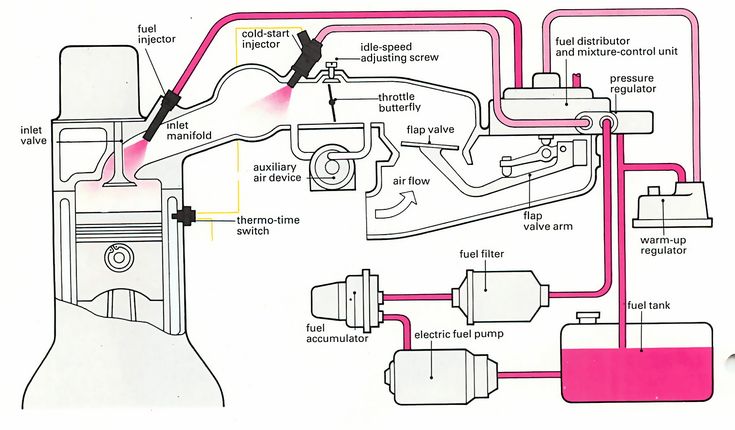
Remove the air filter (or replace it with a new one) so that it does not dry out during long-term storage, and rodents do not make a lair there during the cold weather. Replace the filter cover.
If the battery is not used, it is discharged quickly enough, especially at low temperatures. Therefore, do not leave the battery as it is: its service life will be significantly reduced. You can remove the battery and store until spring in a heated room, periodically monitoring its charge and recharging if necessary. The battery must always be charged!
You can also connect a charger to the battery, which has a technological or so-called floating mode - it will not consume so much electricity, it will turn off when fully charged. So you can keep the battery charged all winter.
Over time, tires tend to deflate, so before sending the ATV for the winter, it is better to pump them up to the maximum and, if possible, check their condition once a week.